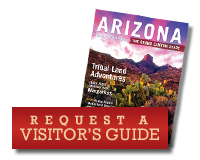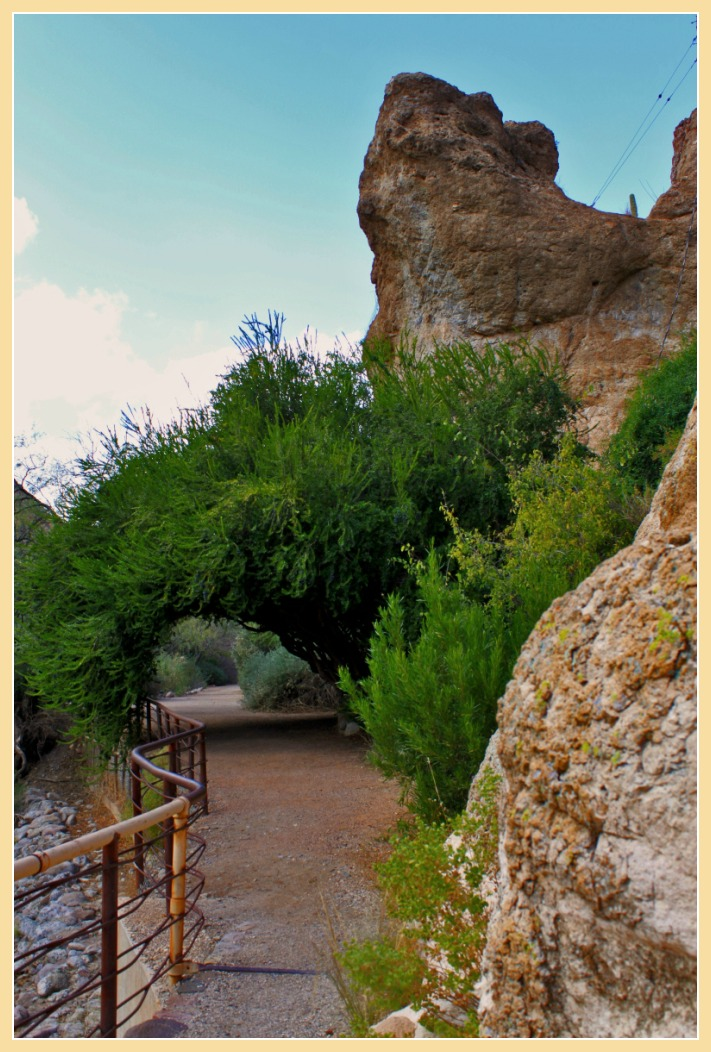Wildflowers are flowering plants that stay dormant most of the year, only to grow quickly into spectacular blossoms for a short time before they go to seed and lie low until the next season.
It takes a good winter rainy season for Arizona deserts to become spring carpets of floral oranges, purples, reds, whites and blues in the spring.
But you don’t have to take a chance on finding desert wildflowers in Arizona. Check out the state’s botanical gardens, where regular cultivation produces a guaranteed eyeful of the spring bloomfest. It lasts all spring with peak times in March and April.
Desert Botanical Garden
Nearly two acres of the Desert Botanical Garden in Phoenix are dedicated to wildflowers and their pollinators. Groundskeepers cultivate and irrigate the Harriet K. Maxwell Desert Wildflower Loop Trail, coaxing a colorful spring display of dozens of desert plants, including desert marigold, pink honeysuckle, chaparral sage, salvia and desert willow.
Exhibits along the trail reveal the life-giving relationship between Sonoran Desert plants and pollinators such as bees, butterflies, moths, hummingbirds and bats.
Boyce Thompson Arboretum
All over the Boyce Thompson Arboretum State Park near Superior – but especially in the Wildflower Meadow of the Demonstration Garden where seeds are tossed in every year – visitors can take in the colors of Mexican gold poppy, desert marigold, orroyo lupine, globe mallow, Penstemon and lots of other species.
Members of the Arizona Native Plant Society lead regularly scheduled wildflower tours through the botanical garden and visitors can take wildflower photography classes through April.
Tohono Chul
Bluebell, Arizona twist flower and blackfoot daisy are among the flowers that flourish in the spring section of the Sonoran Seasons Garden at Tohono Chul in north Tucson.
One of several permanent exhibit gardens, Sonoran Seasons is divided into sections that each showcase plants that thrive during one of the five seasons of the Sonoran Desert – spring, dry summer, monsoon summer, fall and winter.
The grounds also have hiking trails through uncultivated desert areas and docents add special wildflower tours in March and April to see the blooms.
In late spring/early summer, if the timing is right, you might see the magical sight of dozens of Queen of the Night cereus issuing their milky white blossoms that last for only one night. Tohono Chul has the world’s largest private collection of the night-blooming cactus.
Wildflower Safaris
While cultivated wildflower exhibits are lovely and dependable, sometimes you can’t resist the call of the wild Arizona desert in its springtime glory. Botanical gardens can help you with that, too.
The Yuma Conservation Garden doesn’t regularly irrigate the desert wildflower seeds the staff tosses into a small garden. But since it abuts the untamed desert, both areas can offer spectacular displays if the rains cooperate.
Because the Arizona-Sonora Desert Museum in Tucson keeps its grounds as wild as possible, rabbits and other critters munch wildflowers, so it doesn’t maintain a dedicated garden. However, plenty of wildflowers spring up on their own, and the botany department usually sponsors at least one wildflower walk in March through Saguaro National Park’s Tucson Mountain District.
The museum also maintains a telephone hotline, (520) 883-2702 ext. 320, that reports where spring desert wildflowers have been seen in abundance. The Desert Botanical Garden also maintains a sighting update on its website.
Picacho Peak State Park north of Tucson, Kofa National Wildlife Refuge near Yuma, stops along State Highway 60 in Central Arizona and Cave Creek Recreation Park north of Phoenix are perennially mentioned in the updates, but city, state and national wildlife experts throughout Arizona also keep an eye out for displays that they can add to the reports.




